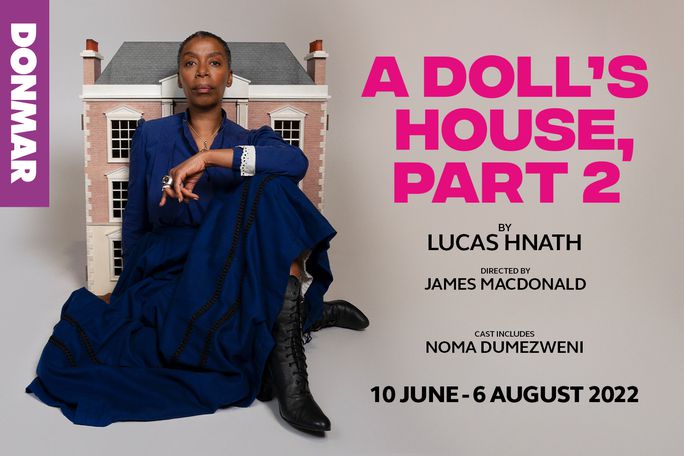Some 140 years after the door slam that George Bernard Shaw said could be heard around the world, comes a sequel – first produced on Broadway in 2017, to Henrik Ibsen’s proto-feminist standard. Nora, wife of Torwald, has left the building and she’s taken many 19th century assumptions about the role of Western women with her. Nora’s closed the door on the idea that a woman shouldn’t be free to earn her own money, or express her own views, or not be able to live autonomously – not just as an adjunct to and as the legal property of her husband. Most grievously, she left behind a baby, and with it some cherished notions about a woman’s function.
Ibsen’s door slam was supposed to be final so what, you ask, does Lucas Hnath think he’s doing, having Nora return to face the music some 15 years later? Is there any value in a summative conversation, a literature seminar, transposed to the now quiet and implicitly settled Helmer household? Does a Doll’s House really need an epilogue?
On this evidence it’s a sound choice. A door slam may be decisive but it’s not final for the people left behind. The force and weight of Ibsen’s play came from the decision to abandon institutional forces – the husband, the baby, the estate; but Hnath, with sound reason and compassion, reminds us that human beings prop up society’s structures and they too have a voice and perspective worth hearing. Part II, then, is the mitigation, a mediation on consequences, a call for balance: a manifesto that makes it simultaneously modern and, in the age of social media and instant judgement, old fashioned.
Essentially a set of two handers between Nora and her the household members she left behind – husband Torvald, aged nanny Anne-Marie, and youngest child Emmy (now a young woman); a dynamic that underscores the debating posture adopted by Hnath; the play sets out the case for Nora’s moral prosecution with great concision.
An absent mother requires someone else to bear the responsibility, namely a notably debilitated Anne-Marie, a lifelong relationship is enriching and potentially vitalising – not as Ibsen supposed mere institutionalised servitude, and personal freedom, though liberating, does not inevitably engender happiness. Nora hopes for a day when everyone is free from shackles like family life and its burdens, but her family are there to remind her that some constraints are character forming and work to the collective good.
The Donmar’s production suggests this is a cathartic philosophical rumination. In transitions between scenes – in the play’s downtime, with the ticking of the clock insistent and loud – the simple set is bathed in red light, heightening its purgatorial aspect. The characters needed to reconcile, to talk it out – the staging tells us – having been in limbo for so long.
No strict resolution is possible, Hnatch suggests, because ultimately the idea of personal freedom and collective responsibility (albeit bound up by a system that oppresses one gender) is irreconcilable. Nora and Torvald are irreconcilable. The former has a touch of the activist in Noma Dumezweni’s characterisation. The latter, a solemn Brían F. O’Byrne, is not just a phallic bludgeon here, rather a gentle and somewhat lost human being, and the play is richer for noting the tragedy of a man who’s trapped by guilt and hallowed out by loneliness. He needs someone to look after him, one feels, but Nora can never be that person. Human wants and political awakenings make poor bed fellows.
There’s some Ibsen-like background complications – legal loopholes and societal barriers to overcome – but these are ultimately window dressing for the doll’s house. Part II successfully develops Ibsen’s themes – a conversation about liberty and responsibility set during a time when both concepts carried considerable societal weight. Men and women alike, of traditional bent and none, will surely find something to chew over.


One response to “A Doll’s House Part II, Donmar Warehouse”
“Human wants and political awakenings make poor bed fellows.” Very well said.
LikeLike